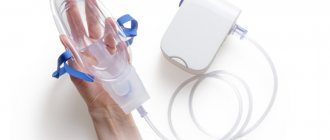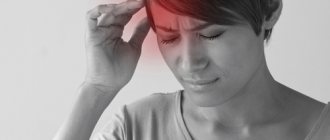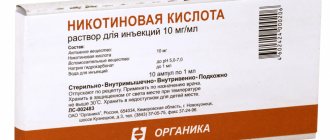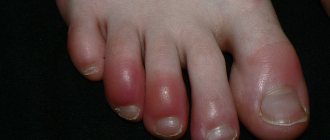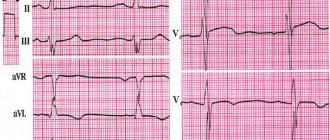How to drink acetylsalicylic acid correctly
An adult patient with active rheumatism is prescribed to take about 6-7 g of ASA per day. Frequency of administration – up to 5 times a day. The duration of the treatment course is 1.5 months. Throughout the course, the dose remains unchanged.
Discontinuation of the drug in adults and children should occur gradually, over 8-12 days.
If a person suffers from headaches or has an increased body temperature, then the medicine is taken in smaller quantities. For fever and pain of various origins, it will be enough to take up to 1 g at a time. Up to 5 doses are allowed per day.
It is worth noting that aspirin will help cope with headaches if they were caused by increased intracranial pressure.
The treatment course should not last more than 14 days.
In order to prevent thrombosis, you need to drink the medicine up to 3 times a day, 0.5 g.
Analogs
Level 4 ATC code matches:
Aspirin-S
Citropak
Aspirin
Citramon
Coficil-Plus
Farmadol
Askofen-P
Cefekon N
Aquacitramon
Upsarin UPSA
Citrapack
Alca Prim
Thrombopol
Citrapar
Acetylsalicylic acid-UBF, Asprovit , Aspinat , Aspivatrin , Nextrim Fast , Fluspirin , Taspir , Aspirin.
How to take acetylsalicylic acid for children
The optimal dose for children is determined taking into account weight (approximately 100-120 mg per 1 kg per day). For active rheumatism, it should be taken up to 5 times a day. After 10-15 days from the start of the therapeutic course, the dosage can be reduced by 1.5 times. Treatment continues for up to 5-6 weeks.
In case of fever and various pains, the child can be given 15 mg per 1 kg up to 5 times a day.
You should not give your child aspirin if there is a high body temperature caused by a viral infection. This can trigger the development of a serious disease - Reine's syndrome, which can threaten the child's life.
The active substance penetrates perfectly into body tissues and fluids.
Composition and effectiveness
In its pure form, ASA is a white, finely crystalline powder with a noticeably sour taste. It is an acetic ester, soluble in water and alcohols. The drug quickly relieves pain and has a pronounced antipyretic, anti-inflammatory, and antiplatelet effect. Its effectiveness is similar to other NSAIDs - non-narcotic analgesics.
- The analgesic properties of ASA are due to its effect on the central nervous system, the activity of prostaglandins and other mediators of pain sensitivity.
- A decrease in body temperature occurs due to the correction of the thermoregulation center, vasodilation and a pronounced diaphoretic effect.
- Inflammatory reactions are eliminated due to the effect of acetylsalicylic acid on the capillary network: reducing the permeability of vascular walls, blocking enzymatic and energetic activity in pathological foci.
- Aspirin has the ability of an anticoagulant: it prevents platelet aggregation (sticking together), slows down the synthesis of prothrombin, which is responsible for blood clotting. This reduces the risk of thrombosis and associated life-threatening conditions.
Acetylsalicylic acid is absorbed almost completely into the bloodstream from the stomach cavity within 10–15 minutes. Severe symptoms of the disease subside immediately:
- dizziness, headache, joint and muscle pain decreases;
- temperature indicators decrease;
- the feeling of heat and other signs of malaise disappear.
As a result of taking aspirin, a decrease in temperature in patients is often accompanied by profuse sweating.
The decay period of acetylsalicylic acid in the body is about 1–2 hours. Metabolites are excreted in the urine. The therapeutic effect of the drug persists for some time.
Due to its rapid therapeutic effect and effectiveness in treating a variety of diseases, acetylsalicylic acid is classified as an emergency medicine and is on the list of vital drugs.
Contraindications
The use of aspirin should be discontinued in the following conditions:
- bleeding in the stomach or intestines;
- kidney and liver diseases;
- gout;
- aortic dissection;
- exacerbation of erosive and ulcerative lesions of the digestive system;
- period of bearing a child;
- breast-feeding;
- increased sensitivity to the elements included in the composition.
Interaction
Increases the toxicity of barbituric drugs , valproic acid , methotrexate , the effects of oral hypoglycemic drugs, Digoxin , narcotic analgesics , Triiodothyronine , sulfonamide drugs .
Weakens the effects of diuretics (potassium-sparing and loop), antihypertensive drugs from the group of ACE inhibitors, and the effect of uricosuric drugs .
When used simultaneously with antithrombotic drugs , thrombolytics , indirect anticoagulants, it increases the risk of bleeding.
GCS enhance the toxic effect of ASA on the mucous membrane of the digestive canal, increase its clearance and reduce plasma concentration.
When used simultaneously with Li salts, it increases the plasma concentration of Li+ ions.
Strengthens the toxic effect of alcohol on the mucous membrane of the digestive canal.
Adverse reactions and overdose
Taking the drug can sometimes be accompanied by negative reactions in the form of: nausea, stomach upset, weight loss, allergies, liver or kidney failure.
With prolonged use, you may experience tinnitus, hearing problems, blurred vision, dizziness, and headache. In rare cases, vomiting and bleeding occur.
With prolonged use or use of the drug in a large dose, an overdose may occur, which is manifested by increased adverse reactions. With severe intoxication, convulsions, shock, severe dehydration and even coma may begin.
In this case, the person should be immediately taken to the hospital. It is necessary to rinse the stomach and take activated charcoal.
Difficult choice: how to protect mucous membranes
The antithrombotic properties of acetisalicylic acid are a salvation for patients with the threat of thromboembolism, stroke, ischemia of the heart and intestines. And at the same time, constant use of the drug causes significant harm to the digestive tract, causing a number of complications.
Concerned with this issue, pharmacists around the world are working to create drugs. which will not cause harm to health with constant use, while maintaining the beneficial properties of acetylsalicylic acid. Developments are progressing well, and several generations of safer connections have been released.
One of the most modern and safe for health preparations of acetylsalicylic acid, which fully preserves the antithrombotic effect, is Fazostabil. Antacid effect. protecting the mucous membranes of the stomach and intestines, achieved with the help of Magnesium hydroxide . Compared to Aspirin, the frequency of adverse reactions to the drug is significantly reduced.
prescribe a dosage schedule and minimally effective dosages of Fazostabil to prevent thrombosis and reduce the risks of pathologies from the cardiovascular system.
To monitor their health, patients taking acetylsalicylic acid for life should be regularly examined by a cardiologist and gastroenterologist, self-monitor for changes in blood pressure levels, and undergo annual blood tests to monitor fibrinogen and clotting factor levels.
Can pregnant women take acetylsalicylic acid?
Pregnancy and breastfeeding are contraindications for the use of aspirin. This is especially true for the 1st and 3rd trimesters. Using the medicine in the early stages can increase the risk of birth defects, and taking it in recent months can lead to post-term pregnancy.
The active substance can pass into breast milk in small quantities. When children accidentally took the drug, no adverse reactions appeared, but it is still worth refraining from taking it. If a woman is prescribed long-term use of aspirin, then breastfeeding must be interrupted for the entire course of treatment.
For children
In children, ASA cannot be used for hyperthermia associated with a viral infection , since this combination can cause the development of a life-threatening condition for the child - Reye's syndrome .
In newborn infants, salicylic acid can displace bilirubin from its association with albumin and contribute to the development of encephalopathy .
ASA easily penetrates into all fluids and tissues of the body, including cerebrospinal, synovial and peritoneal fluid.
In the presence of edema and inflammation, the penetration of salicylate into the joint cavity is accelerated. In the stage of inflammation, on the contrary, it slows down.
How to reduce a child's temperature?
Now let’s talk about the medications that should definitely be in your first aid kit if a baby is growing up in the family. Thus, pediatricians prohibit the use of drugs such as:
- Aspirin;
- Analgin;
- Nise.
The baby can only be given medications that contain Paracetamol or Ibuprofen. Even if the child has no symptoms, they must be correctly calculated based on the baby’s weight and measured using a special syringe or measuring spoon. You should not use ordinary teaspoons for these purposes, and it is better to completely forget about the concept of “by eye”.
Reviews
Almost all reviews left about ASK are positive. The drug is inexpensive, effective, well studied, and has a wide range of applications. The tablets perfectly relieve inflammation and fever, and regular use of ASA in small doses can reduce the risk of cardiovascular complications in predisposed patients.
Potential side effects are usually referred to as the disadvantages of the drug. However, as most people note, to avoid them, during the treatment period it is enough to simply follow certain rules: at a minimum, before taking the pills, you should carefully read the instructions and give up alcohol for the entire treatment period.
Is it necessary to bring down a child’s temperature to 36.6?
If, after using antipyretics, the readings decrease by 0.5°C within an hour, then the process is normal. Do not aim to reach 36.6°C immediately. This can cause serious overload of the child’s body, which can lead to a deterioration in overall well-being.
The ideal temperature would be 37-37.5 degrees. After some time, a jump may occur again. This occurs because the active component of the medicine is excreted from the body and ceases its effect. If several hours have passed after taking the drug, you can give the child another dose. It is very important to observe time intervals between doses and monitor temperature readings.
With an effective fight of the immune system against pathogenic microbes and with a competent approach to treatment, recovery, as a rule, is 3-5 days.
What to do if your baby gets chickenpox?
Has your child caught chickenpox? Of course, this acute viral disease can also cause high fever. How to proceed in this case?
The most important thing is to choose an antipyretic drug for your baby. Under no circumstances should you use Nurofen. To combat high fever during chickenpox, medications containing Paracetamol are suitable.
What to do if your child has a fever?
Does your baby have a fever? Then you can’t hesitate - you need to urgently consult a doctor. Especially if it is accompanied by:
- rash;
- neck muscle tension;
- abdominal pain;
- vomiting.
But don’t panic: fever is typical for most common viral respiratory infections and high temperatures - about 40 degrees. This is how our body responds to infection. The pediatrician will simply examine the child and select the right treatment for him, taking into account the severity of the disease.
